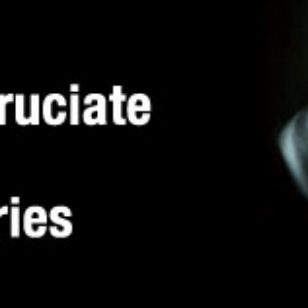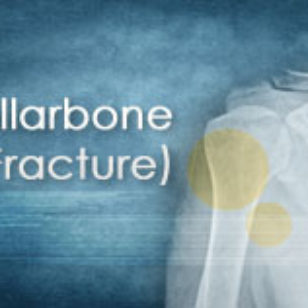
A cast is a big, hard bandage that’s usually made of material like fiberglass or plaster. Casts keep bones in place while they heal.
Kids get casts for many reasons. Usually they’re for broken bones, but kids also might get casts to help bones and surrounding tissues grow properly, or to aid healing after a bone surgery.
A cast wraps around the broken area and needs to be removed by a doctor when the bone is healed. Depending on the age of the child and type of break or healing needed, a cast can be on for as little as 4 weeks or as long as 10 weeks.
Before Getting a Cast
Sometimes splints are worn for a few days (usually between 3 to 7) before a cast is made. This allows for any swelling to ease so that the cast can provide the best fit.
Splints are usually held in place by fabric fasteners, velcro, or tape. A doctor or orthopedic technician will teach you the best way for your child to wear the splint and how to ensure a good fit.
Types of Casts
Casts usually are made of:
- Plaster of Paris: This heavy white powder forms a thick paste that hardens quickly when mixed with water. Plaster of Paris casts are heavier than fiberglass casts and don’t hold up as well in water. They’re typically used when the strongest hold is needed.
- Synthetic (fiberglass) material: These casts come in many bright colors and are lighter and cooler. The fiberglass (a kind of moldable plastic) covering is water-resistant, but the padding underneath is not. You can, however, sometimes get a waterproof liner. The doctor putting on the cast will decide whether your child should get a fiberglass cast with a waterproof lining.
- Elastic or other soft material: These casts are similar to fiberglass casts but allow for more movement of the limbs inside the cast. Also, they can be removed without using a cast saw, so they may be a good choice for a very young child. They’re not used to protect fractures, but can be used when limbs are healing after a surgery.
There are many types of casts. The most common casts are:
- Short arm casts: placed from the knuckles of the hand to just below the elbow. These types of casts are used for forearm and wrist breaks and after some surgeries.
- Long arm casts: these go from the upper arm to the knuckles of the hand. They’re generally used for upper-arm or elbow fractures, but can be used in forearm breaks.
- Short leg casts: these run from just below the knee to the bottom of the foot. They’re usually used for ankle and lower-leg breaks or surgeries.
- Long leg casts: applied from the upper thigh to down over the foot. They’re used to heal breaks or fractures of the knee, lower leg, or ankle.
- Short leg hip spica casts (or body casts): these go from the chest to the knees and are used to keep hip muscles and tendons in place after surgery.
Getting a Cast
Applying a cast requires a few simple steps. First, doctors wrap several layers of soft cotton around the injured area. Next, the plaster or fiberglass outer layer is soaked in water. The doctor wraps the plaster or fiberglass around the soft first layer. The outer layer is wet but will dry to a hard, protective covering. Doctors sometimes make tiny cuts in the sides of a cast to allow room for swelling.
Once the cast is on, the doctor will probably recommend that your child prop the cast on a pillow or stool for a few days to reduce swelling and pain in that area. A child who has a walking cast (a foot or leg cast with a special device implanted in the heel to allow for walking) shouldn’t walk on it until it’s dry (this takes about 1 hour for a fiberglass cast and 2 or 3 days for a plaster cast).
If the cast or splint is on an arm, the doctor might give your child a sling to help support it. A sling is made of cloth and has a strap that loops around the back of the neck. It acts like a special sleeve to keep the arm comfortable and in place. A child with a broken leg who is mature enough and tall enough will probably get crutches to make it a little easier to get around.
The area around any break will probably be a little sore and swollen for a few days, so the doctor may recommend acetaminophen or ibuprofen to help ease any pain.
Cast Care
For bones to heal properly, certain steps must be taken to make sure the cast can do its job. These tips can help keep a cast in good shape:
- Keep non-waterproof casts dry. Many casts are not waterproof, so keeping them dry for the whole time the cast is in place is very important. It is best for your child to take baths, not showers. The doctor will tell you to cover the cast with a plastic bag or special cast protector for baths. The cast area should be propped up on something like a milk crate during the bath to keep it completely out of the water. Children under 5 years of age should be sponge bathed.
- Keep out foreign objects or substances. At some point, the skin inside the cast will probably become itchy. Your child should not stick anything into the cast to relieve itching, as this could scrape the skin and lead to infection. You also should not pour baby powder, creams, or oils into the cast.
To relieve itching, tapping on the outside of the cast or using a cool blow dryer to blow air in around the edges of the cast may help.
Watch young children closely because they may place small toys or food inside their cast.
- Check for cracks. Check the cast regularly for cracks, breaks, tears, or soft spots. If you notice any of these things, contact your doctor.
- Don’t alter the cast. Decorating the cast and having friends and family sign it is OK, but things like pulling out the cotton lining or breaking off parts are not.
- Fix sharp edges. If a sharp edge develops on the cast and is irritating the skin, put tape or moleskin on the edge to protect the skin from the rough surface.
When to Call the Doctor
Casts rarely cause any problems if they are applied and cared for properly. Sometimes, sores can develop if the splint or cast is loose fitting and rubs the skin. These sores can get infected. Tight-fitting splints or casts can make fingers or toes turn bluish. Fixing the cast or splint can relieve tightness.
Call your doctor if you notice any of the following:
- pain that doesn’t get better with pain medicine and/or raising the casted part
- tightness that leads to the hand or foot feeling numb or tingly
- fingers or toes turning white, purple, or blue
- trouble moving toes or fingers
- a blister developing inside the cast
- any unusual odor or drainage coming from inside the cast
- a break in the cast or the cast becoming loose
- a wet cast
- skin around the edges of the cast that gets red or raw
- fever
Cast Removal
Once the bone is healed, the cast will be removed with a small electrical saw. The saw’s blade isn’t sharp — it has a dull, rounded edge that vibrates from side to side. This vibration is strong enough to break apart the fiberglass or plaster but won’t hurt skin. Don’t attempt to remove the cast on your own.
Once the cast is off, the injured area will probably look and feel different to your child. The skin will be pale, dry, or flaky; the hair will look darker; and the muscles in the area will look smaller or thinner. This is all temporary. The doctor or a physical therapist can recommend special exercises to help the bone and surrounding muscles get back in working order.


